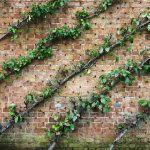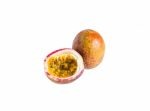
Next year, 2016, is the year of the Brazilian Olympics. It pays to see what exotic fruits are available from a country with the richest diversity of biological plants in the world. One fruit deserves especial mention because of its high vitamin A and C contents.
Pitanga (Eugenia uniflora L.) is a little known exotic fruit which is rich in carotenoids such as lycopene and rubixanthin. It is a small tree from the Myrtaceae family and is commonly known by many other names including the Brazilian Cherry, Suriname Cherry, Cayenne Cherry and Cerisier Carré (French Guiana). The name pitanga is local to Brazil and Uruguay but is also called ñangapirí by various tribes. It is found throughout much of tropical and sub-tropical South America but mainly along coastal areas. Due to its high adaptability to different soil and climate conditions, this plant has spread to other locations, for example California, Florida, Caribbean Islands, China and southern France (Silva, 2006).
Appearance Of The Fruit
The fruit looks like a tiny pumpkin and is orange to dark-red but there are also dark purple colours available too. It is approximately 3 cm in diameter, with eight longitudinal grooves. The fruit’s pulp, comprises approximately 77% of the whole fruit and it is this portion which is used for fruit processing. Until recently, purple-fruited selections of Brazilian cherry were not widely known or grown. The purple-fruited varieties have substantially higher levels of certain antioxidants than the common red-fruited types (Griffis et al., 2012).
Colour & Antioxidants
As the colour of the fruit suggests, it is a good source of carotenoids which could serve as strong antioxidants. The carotenoids from freeze-dried cherry pulp were extracted using supercritical carbon dioxide (SC-CO2) and the types examined using high-performance liquid chromatography coupled to photodiode array and mass spectrometry detection. The main carotenoids were lycopene, rubixanthin and β-cryptoxanthin. The maximum recovery of carotenoids was obtained at 60 °C and 250 bar pressure, with an extraction level of 55%. The total carotenoid content recorded was 74% rubixanthin and 78% lycopene from the pulp. The total carotenoid concentration in the extract was 5,474 μg/g, as represented by 66% lycopene and 32% rubixanthin.
Medical Uses
The fruit possesses a variety of significant pharmacological properties (Lim, 2012) which may be due to its antioxidant carotenoids and polyphenols. Its essential oil is used as an antihypertensive (Lim, 2012; Consolini et al., 1999), treatment for diabetes (Matsumura et al., 2000), antitumor and cancer agent (Ogunwande et al., 2005) and as an analgesic (Amorim et al., 2009). It has demonstrated some antiviral and antifungal activity (Costa et al., 2010). It could function as an antimicrobial and has been shown to have activity against microorganisms such as Trichomonas gallinae based on in vitro studies (Ibikunle et al., 2011),Trypanosoma cruzi (Santos et al., 2012) and Leishmania amazonensis (Rodrigues et al., 2013).
It also shows significant anti-inflammatory properties, (Lim, 2012) and is used extensively as a folk remedy in South America against stomach diseases.
References
Amorim, A.C.L., Lima, C.K.F., Hovell, A.M.C., Miranda, A.L.P., Rezende, C.M. (2009). Antinociceptive and hypothermic evaluation of the leaf essential oil and isolated terpenoids from Eugenia uniflora L. (Brazilian Pitanga). Phytomedicine 16 (10) pp. 923–8. doi:10.1016/j.phymed.2009.03.009. PMID 19423309.
Consolini, A.E., Baldini, O.A., Amat, A.G. (1999) Pharmacological basis for the empirical use of Eugenia uniflora L. (Myrtaceae) as antihypertensive. J. Ethnopharmacol. 66 (1) pp. 33–9. doi:10.1016/s0378-8741(98)00194-9. PMID 10432205.
Costa, D.P., Filho, E.G.A., Silva, L.M.A.; et al. (2010). Influence of fruit biotypes on the chemical composition and antifungal activity of the essential oils of Eugenia uniflora leaves. J. Brazilian Chemical Society 21 (5) pp. 851–8. doi:10.1590/s0103-50532010000500012.
Genival Filho, L., De Rosso, V. V., Meireles, M. A. A., Rosa, P. T., Oliveira, A. L., Mercadante, A. Z., & Cabral, F. A. (2008). Supercritical CO 2 extraction of carotenoids from pitanga fruits (Eugenia uniflora L.). J. Supercritical Fluids 46(1), pp. 33-39
Griffis, J.L. Jr, Sams, S.E. et al. (2012). Purple-fruited Pitanga – antioxidant levels and flavors of matue fruits vary considerably among closely related cultivars. In: III International Symposium on Guava and other Myrtaceae. I. S. f. H. Science. Pp. 209–215. Petrolina – Brazil: International Society for Horticultural Science..
Ibikunle, G.F., Adebajo, A.C., Famuyiwa, F.G., Aladesanmi, A.J., Adewunmi, C.O. (2011). In-vitro evaluation of anti-trichomonal activities of Eugenia uniflora leaf. Afr. J. Tradit. Complement Altern. Med. 8 (2) pp. 170–6. PMID 22238499.
Lim, TK (2012). Eugenia Uniflora. In: Edible Medicinal And Non Medicinal Plants. Vol. 3, Fruits 3 (Fruits ed.). Springer Science & Business Media. pp. 620–629. ISBN 9400725345.
Matsumura, T., Kasai, M., Hayashi, T., Arisawa, M., Momose, Y., Arai, I., Amagaya, S., Komatsu, Y. (2000). Alpha-glucosidase Inhibitors From Paraguayan Natural Medicine, Nangapiry, The Leaves Of Eugenia Uniflora. Pharm Biol 38 (4) pp. 302–7. doi:10.1076/1388-0209(200009)3841-AFT302. PMID 21214481
Ogunwande, I.A., Olawore, N.O., Ekundayo, O., Walker, T.M., Schmidt, J.M., Setzer, W.N. (2005). Studies on the essential oils composition, antibacterial and cytotoxicity of Eugenia uniflora L. Int. J. Aromatherapy. 15 (3): pp. 147–152. doi:10.1016/j.ijat.2005.07.004.
Rodrigues, K.A., Amorim, L.V., de Oliveira, J.M., Dias, C.N., Moraes, D.F., Andrade, E.H., Maia, J.G., Carneiro, S.M., Carvalho, F.A. (2013) Eugenia uniflora L. Essential Oil as a Potential Anti-Leishmania Agent: Effects on Leishmania amazonensis and Possible Mechanisms of Action. Evid. Based Complement Alternat. Med. 2013: 279726. doi:10.1155/2013/279726. PMC 3590759. PMID 23533469.
Santos, K.K., Matias, E.F., Tintino, S.R., Souza, C.E., Braga, M.F., Guedes, G.M., Rolón, M., Vega, C, de Arias, A.R., Costa, J.G., Menezes, I.R., Coutinho, H.D. (2012) Anti-Trypanosoma cruzi and cytotoxic activities of Eugenia uniflora L. Exp. Parasitol. 131 (1) pp. 130–2. doi:10.1016/j.exppara.2012.02.019. PMID 22426246.
Schapoval, E, E., Silveira, S. M., Miranda, M. L., Alice, C. B., Henriques, A. T. (1994) Evaluation of some pharmacological activities of Eugenia uniflora L. J. Ethnopharmacol. 44 (3) pp. 137–42 doi:10.1016/0378-8741(94)01178-8. PMID 7898120.
Silva, S.M. (2006). Pitanga. Revista Brasileira de Fruticultura, 28.
Tábata. T., Garmus, L.C. ,Paviani, F. A., Cabral (2013) Extracts From Pitanga Leaves (Eugenia Uniflora L.) With Sequential Extraction In Fixed Bed Using Supercritical Co2, Ethanol And Water As Solvents (PDF). Department of Food Engineering, University of Campinas.


Leave a Reply